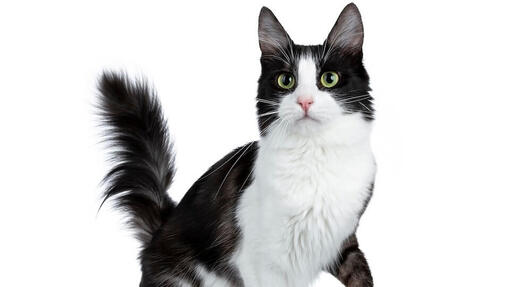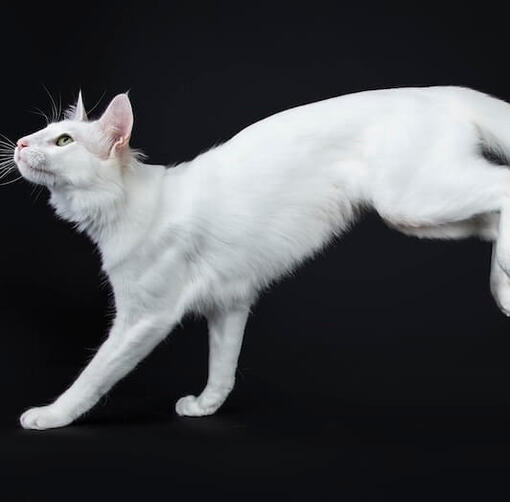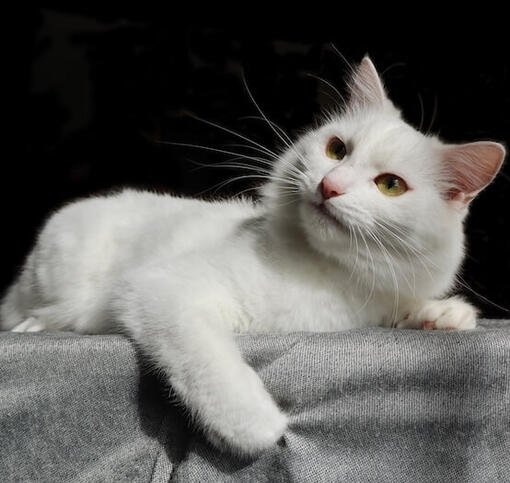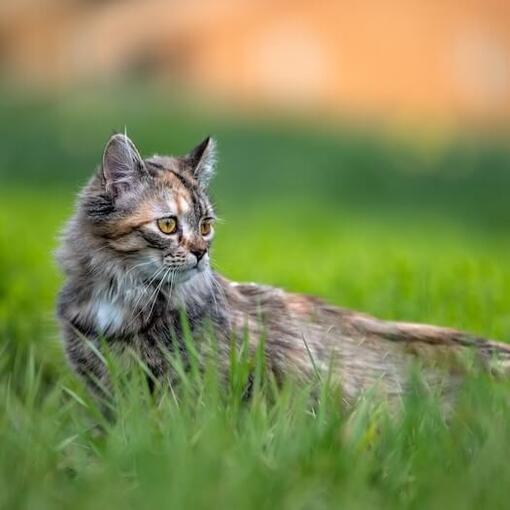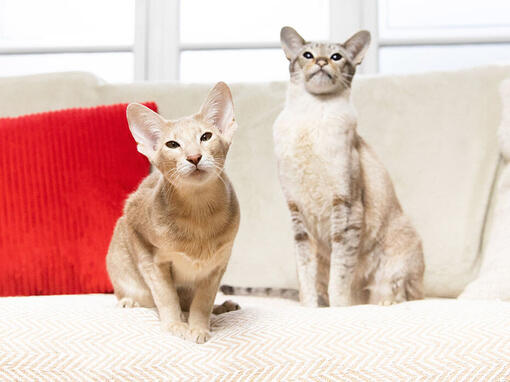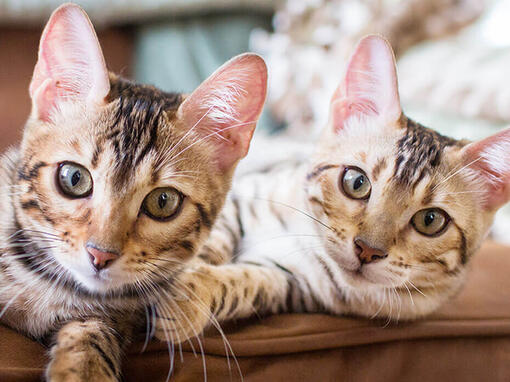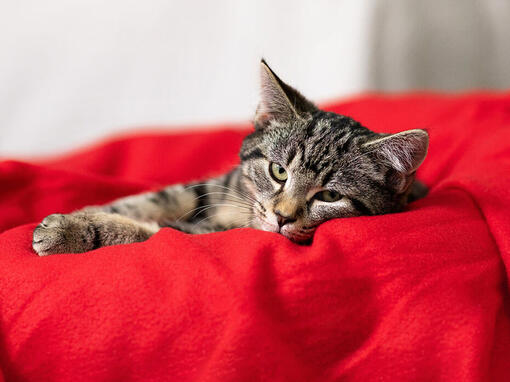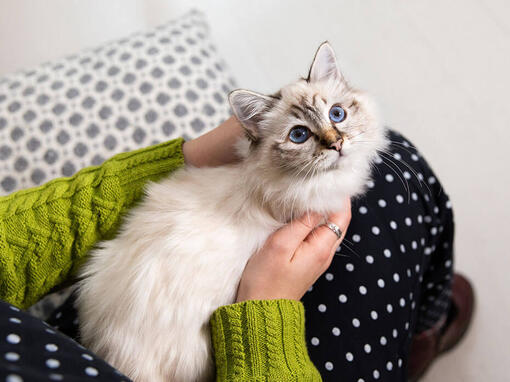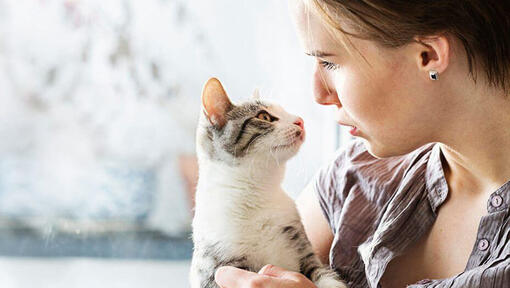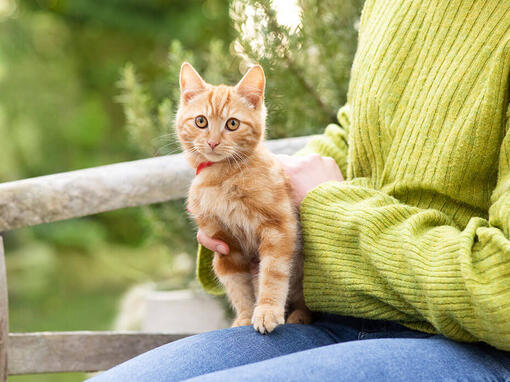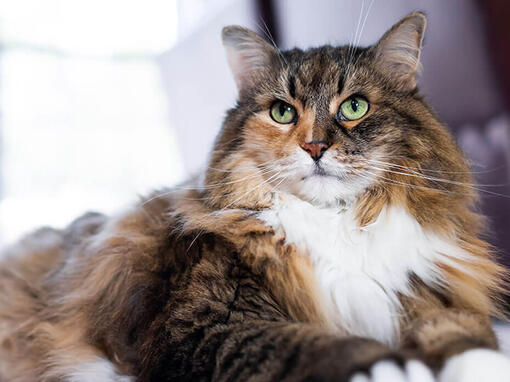- Playful and curious cat
- Sociable and dependent cat
- Somehow talkative cat
- Average build cat breed
- Requires grooming once a week
- Non hypoallergenic breed
- Needs some out-door space
- Great family cat
Generally healthy breed
Turkish Angoras are generally healthy cats, but like all breeds, they can be prone to certain health issues. One of the most common genetic conditions found in this breed is hypertrophic cardiomyopathy (HCM), a heart condition that should be monitored by a veterinarian.
Deafness is also more common in white Turkish Angoras with blue eyes, though not all white or odd-eyed Turkish Angoras are affected. Regular vet check-ups, a balanced diet, and a healthy lifestyle are key to ensuring your Turkish Angora lives a long, happy life.
A rare but, unfortunately, mortal condition is ataxia, a nervous system disease which can affect the legs, the body, the head or all of them at the same time. Most of the affected kittens won’t reach maturity, but early detection has helped to significantly decrease the number of cases.
Finally, because of a lack of pigmentation, white Angora cats have a higher risk of suffering sunburns, and thereby, associated skin cancer if they spend too much time under direct sunlight.
Turkish Angora Appearance
The Turkish Angora size is medium and they have a long, slender body and fine-boned structure. Their most distinctive feature is their silky, medium-length coat, which has a soft, luxurious texture. While the breed is often associated with a pure white coat, Turkish Angoras can come in a variety of colors, including black, blue, red, and cream, as well as various patterns.
Their head is small to medium-sized with a wedge-shaped face and large, almond-shaped eyes that can be blue, green, amber, or even odd-eyed (one eye blue, the other green or amber). Turkish Angoras have large, pointed ears that stand erect, adding to their alert and elegant appearance. Their long, bushy tail is carried high, often in a plume-like fashion.
Turkish Angora Personality
The Turkish Angora is a curious breed, always eager to explore its surroundings. These cats are known for their playful nature and love of interactive games, making them great companions for active households.
While they are affectionate, the Turkish Angora personality can be quite independent. They enjoy being the center of attention and may even "talk" to their owners with soft chirps and meows. These cats are typically good with children and other pets, especially when properly socialised from a young age.
Vet Rating
| Family-friendly: | 5/5 |
| Playfulness: | 4/5 |
| Intelligence: | 4/5 |
| Tendency to Vocalise: | 4/5 |
| Likes other pets: | 4/5 |
| Grooming needs: | 2/5 |
| Shedding: | 3/5 |
The Turkish Angora is one of the oldest natural cat breeds, with roots tracing back to the mountainous regions of Turkey, particularly Ankara (formerly known as Angora). This breed has been cherished in Turkish culture for centuries and was highly regarded in the Ottoman Empire. Turkish Angoras were first introduced to Europe in the 16th century, where they became popular among the French nobility.
The breed faced a decline in the 19th century as Persian cats became more popular, but Turkish breeders worked to preserve the breed. There was even a breeding program set in place by the Ankara Zoo, in Turkey, with the goal of producing white cats with blue, gold, and odd eyes.
The Turkish Angora is one of the oldest natural cat breeds, with roots tracing back to the mountainous regions of Turkey, particularly Ankara (formerly known as Angora). This breed has been cherished in Turkish culture for centuries and was highly regarded in the Ottoman Empire. Turkish Angoras were first introduced to Europe in the 16th century, where they became popular among the French nobility.
The breed faced a decline in the 19th century as Persian cats became more popular, but Turkish breeders worked to preserve the breed. There was even a breeding program set in place by the Ankara Zoo, in Turkey, with the goal of producing white cats with blue, gold, and odd eyes.
The Turkish Angora cat is generally more suitable to being an indoor cat. Even though they are highly energetic and curious cats, they would be much safer kept indoors. Also, given their intelligence, they could be trained to experience the outdoors as well, as long as this is done under supervision.
These cats require plenty of playtime and stimulation as they can be quite active and intelligent. It would be a good idea to provide them with interactive toys, climbing trees, and puzzle feeders to keep them entertained.
Turkish Angoras, like all cats, require a balanced diet rich in high-quality protein to maintain ‘ideal body condition’. It's important to provide food, either wet or dry cat food that meets their nutritional needs based on their age, size, and activity level. Fresh water should always be available, and treats should be given in moderation to prevent obesity.
Consulting with a veterinarian can help ensure that your Turkish Angora's diet supports their overall health and well-being.
Despite their luxurious coats, Turkish Angoras are relatively low-maintenance when it comes to grooming. Their silky fur is not prone to matting, so the Turkish Angora grooming routine would involve only a weekly brushing which is usually sufficient to keep their coat looking its best. Some regular brushing also helps to reduce shedding and minimise hairballs.
As with all cats, regular dental care, including tooth brushing, is recommended to prevent dental disease. It's also important to keep their nails trimmed and ears clean to maintain overall health.
Turkish Angora cats will generally get along well with their human families, often exploring their environment and learning quickly. They also do well with children, especially if the children are taught to handle the cat gently and respectfully.
If you’re thinking about getting a Turkish Angora cat, we encourage you to consider adopting one as there are many out there in need of a loving home. You can look for a Turkish Angora for adoption on the Wamiz website.
-
The Turkish Angora is one of the few cat breeds that enjoys playing in water. Some Turkish Angoras even like to dip their paws into their water bowls or join their owners in the shower.
-
In Turkey, the Turkish Angora is considered a national treasure, and the breed is protected by the government in state-sponsored breeding programs.
-
The breed's characteristic silky coat is due to a recessive gene, making it unique among long-haired cats.
How to identify a Turkish Angora cat?
A Turkish Angora cat can be identified by their slender, graceful body, silky medium-long coat, and large almond-shaped eyes that can be blue, green, amber, or odd-coloured. They have large, pointy ears with tufted tips and a long, plumed tail.
Are Turkish Angora cats affectionate?
Yes, they are known for forming strong bonds with their owners and will often enjoy spending time with their human companions.
Are Turkish Angora cats aggressive?
The Turkish Angora temperament is not typically aggressive. However, like any cat, they may show signs of aggression if they feel threatened, are not properly socialised, or are mishandled.
Are Turkish Angora cats hypoallergenic?
No, they are not considered hypoallergenic. While they have a fine, silky coat and shed less than other breeds, they still produce allergens like dander, which can trigger allergic reactions.
